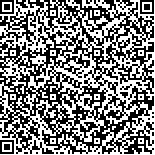| 引用本文: | 王丑明,张屹,田琪,黄代中,高吉权,刘云志,龚正,陶世新,孟星亮.1988-2016年洞庭湖大型底栖动物群落变化及驱动因素分析.湖泊科学,2021,33(1):218-231. DOI:10.18307/2021.0112 |
| Wang Chouming,Zhang Yi,Tian Qi,Huang Daizhong,Gao Jiquan,Liu Yunzhi,Gong Zheng,Tao Shixin,Meng Xingliang.Dynamics of taxonomic and functional community structure in macrozoobenthos and the underlying driving factors in Lake Dongting during 1988 and 2016. J. Lake Sci.2021,33(1):218-231. DOI:10.18307/2021.0112 |
|
| |
|
|
| 本文已被:浏览 5996次 下载 3635次 |

码上扫一扫! |
|
|
| 1988-2016年洞庭湖大型底栖动物群落变化及驱动因素分析 |
|
王丑明1, 张屹1, 田琪1, 黄代中1, 高吉权1, 刘云志1, 龚正1, 陶世新1, 孟星亮2
|
|
1.湖南省洞庭湖生态环境监测中心, 岳阳 414000;2.中国科学院水生生物研究所, 武汉 430072
|
|
| 摘要: |
| 洞庭湖是我国第二大淡水湖泊,其水文条件对湖泊湿地生态系统健康的维系发挥着不可替代的作用.近年来,水环境恶化日益威胁湖区水生态系统健康.然而,有关底栖动物水生态健康评价的研究仍然停留在物种群落结构方面,缺乏底栖动物群落功能对水污染响应的研究,尤其在较长时间尺度上.因而,本研究分析了1988—2016年近30 a来洞庭湖的水质和底栖动物群落数据,探寻底栖动物群落功能对水环境恶化的响应规律.结果表明,洞庭湖水体总氮浓度是威胁底栖动物物种和功能群落变动的主要因素.此外,不断恶化的水环境驱动底栖动物物种和功能群落结构改变,表现为敏感水生昆虫的比例下降,寡毛类、小型软体动物比例的上升,并伴随着体长为1.00~1.99 cm、背扁型、侧扁型、不移动等功能性状类别比例的下降.同时,水环境恶化降低物种丰富度、功能丰富度和劳氏二次熵多样性.基于距离的冗余分析结果显示,水体氮营养盐、重金属离子和有机污染物共同驱动底栖动物物种群落结构的变异,而营养盐类与无/有机污染物决定着其功能群落结构的变异.鉴于洞庭湖水质不断恶化的状况,本研究建议采取一系列措施,包括合理管控湖区周边废水直排入湖、取缔湖区内的非法采砂以及调控枯水季洞庭湖水位等.生物监测和评价方面,建议将底栖动物物种和功能群落一并纳入评价体系,且优先选用物种丰富度、功能丰富度和劳氏二次熵指数评估换水周期较短的大型浅水湖泊水质变化对底栖动物物种和功能多样性的影响. |
| 关键词: 洞庭湖 大型底栖动物 功能群落 |
| DOI:10.18307/2021.0112 |
| 分类号: |
| 基金项目:生态环境部生物多样性保护专项基金项目(2017HB2096001006)和国家自然科学基金项目(41571495)联合资助. |
|
| Dynamics of taxonomic and functional community structure in macrozoobenthos and the underlying driving factors in Lake Dongting during 1988 and 2016 |
|
Wang Chouming1, Zhang Yi1, Tian Qi1, Huang Daizhong1, Gao Jiquan1, Liu Yunzhi1, Gong Zheng1, Tao Shixin1, Meng Xingliang2
|
|
1.Dongting Lake Eco-Environment Monitoring Centre of Hubei Province, Yueyang 414000, P. R. China;2.Institute of Hydrobiology, Chinese Academy of Sciences, Wuhan 430072, P. R. China
|
| Abstract: |
| Lake Dongting is the second-largest and Yangtze-connected freshwater lake in China, maintaining the wetland ecosystem health. However, in recent decades, the deterioration of water quality is increasingly threatening the lake ecosystem health. Previous studies related to the bioassessment of the aquatic ecological condition using the macrobenthic fauna focused on the effects of deterioration of water quality on the benthic natural community structures, instead of its community functioning, especially at a long time scale. Thus, the present study analyzed the water quality and macrozoobenthic faunal data of the lake in the past thirty years to detect the mechanisms of variances of functional structures underlying the deterioration of water quality. Our results showed that total nitrogen remains the main stressor affecting the changes of taxonomic and functional structures in macrobenthic fauna. In addition, degraded water environmental condition determined the changes of taxonomic and functional structures in the macrozoobenthos, showing the decreases in the proportion of sensitive aquatic insects and increases in the proportion of oligochaetes and small mollusks, accompanying by decreasing in the trait category values of 1.00-1.99 cm, dorsal flat, lateral flat, no mobility, etc. Moreover, the accumulation of aquatic pollution decreased taxa richness, functional richness, and Rao's Q diversity. Results of dbRDA showed that nitrogen, heavy metals, and inorganic/organic pollutants jointly determined the variation of macrobenthic taxonomic structure, while nitrogen and inorganic/organic pollutants dominated the variation of its functional structure. According to the deteriorated water quality of the lake, a set of measures are proposed in the present study, including treatment of domestic sewage and industrial wastewater discharged directly into the lake, banning illegal sand mining in the lake area, and maintaining the natural water level in dry season. In terms of bioassessment and monitoring, we suggest that the taxonomic and functional community structure in macrozoobenthos should be incorporated into the bioassessment framework. If assess the effects of the deteriorated water quality of large shallow lakes with short periods of water exchange on the macrozoobenthos taxonomic and functional diversity, the taxa richness, functional richness, Rao's quadratic entropy coefficient indices are recommended. |
| Key words: Lake Dongting macrozoobenthos functional community structure |
|
|
附件
|
|